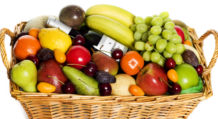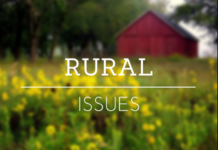A new publication provides adults information on how to assist the youngest among us following a natural disaster.
MANHATTAN, Kan. – Natural disasters come in a variety of forms and can forever alter the lives of those impacted. As communities and families rebuild, often times those around children do not know how to assist a child in the recovery process.
Tornadoes, hurricanes and other weather-related events are disasters that often affect a community or region. These events can distress children and the way they function, said Bradford Wiles, assistant professor and extension specialist in early child development at Kansas State University.
“Anything that is a challenge to families can have profound effects on the way children respond and the way families respond,” Wiles said.
He is a co-author on a new publication available through K-State Research and Extension titled, “Disasters: Children’s Responses and Helping Them Recover.” The goal of the publication is to provide adults within the family and external to the family with researched-based information on helping children through difficult events.
It is important to understand that children react differently to disasters than adults.
These reactions can vary greatly in intensity compared to adults, said Elizabeth Kiss, associate professor of Family Studies and Human Services at K-State. Kiss is also an extension specialist and co-author of the publication.
In addition, disasters affect children ranging from infants to older children differently, she said.
“One of the biggest things my colleague (Kiss) and I have studied is how children respond differently to disasters,” Wiles said. “We focused on how the system is affected by a disaster.”
By the ages
After a disaster, children may have difficulty sleeping, experience intense nightmares, and in some cases, daydream about the disaster, Wiles said. Children can also be susceptible to physical ailments, including headaches, indigestion, stomachaches, fatigue and panic attacks. It is important not to minimalize these symptoms.
Children of all ages can have reactions to disasters. Infants can detect different cortical levels in breast milk, as the stress affects their mothers. Infants and toddlers can also detect tension in the environment surrounding them.
Young children will often act out the events of the disaster, Wiles said. A child might use dolls or other toys to symbolize people or things and can possibly be violent with them. A young child may also give the disaster human traits and personalities, such as a tornado being an “evil spirit.”
In school-age children, academic performance will often decline, he said. In addition to lower grades, the child may become less focused, unruly, and even rude toward peers and adults.
A child’s emotions could become more easily triggered after a disaster compared to before. Older children can experience deep depression and some may even attempt or commit suicide.
Wiles said children’s activities such as destructive behavior toward animals or people, substance abuse, rapid changes in weight, withdrawal from social activities, poor school performance, chronic health issues and feelings of being personally responsible for the disaster should be addressed professionally.
Financial stress
While the financial implications of a disaster are not discussed at length in the publication, Kiss warns that children are often concerned by circumstances surrounding financial hardships.
“Children do worry about where the money is coming from, where they’re going to sleep, if they are going to have money for food, if they are going to be able to keep their pets,” she said.
Kiss stressed the importance of talking to children in an age-appropriate way about the financial implications of the disaster. It’s important to reassure the child that patience and mindfulness go a long way. While children cannot grasp many adult concepts, they can understand things will change.
“Also, when you’re trying to think of solutions for your family, if it makes sense, get the children involved,” Kiss said. “Let them help to brainstorm possible solutions. Sometimes children may be willing to forgo or delay things that parents aren’t aware of.”
Prepare Kansas is an online disaster preparedness challenge sponsored by K-State Research and Extension during the month of September, Kiss said, so now is a good time for families to talk about the potential for natural disasters, how to prepare for those and include children in that process. For more information or to take part in the Prepare Kansas challenge, contact your local extension office or go online to the Prepare Kansas blog.
For these and other tips on helping children affected by a disaster, visit the K-State Research and Extension Bookstore, or contact your local extension office. The new publication is also available in Spanish.




